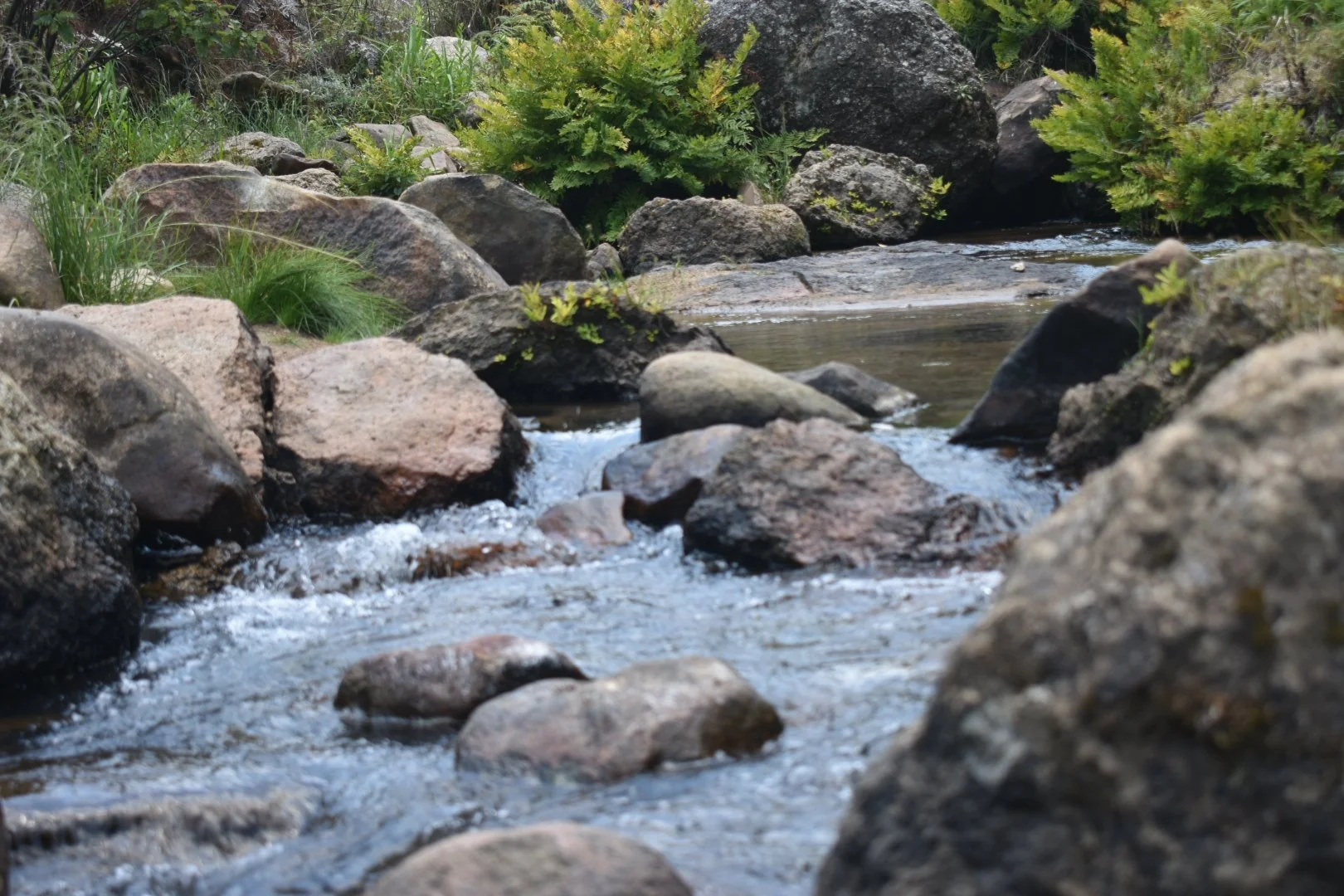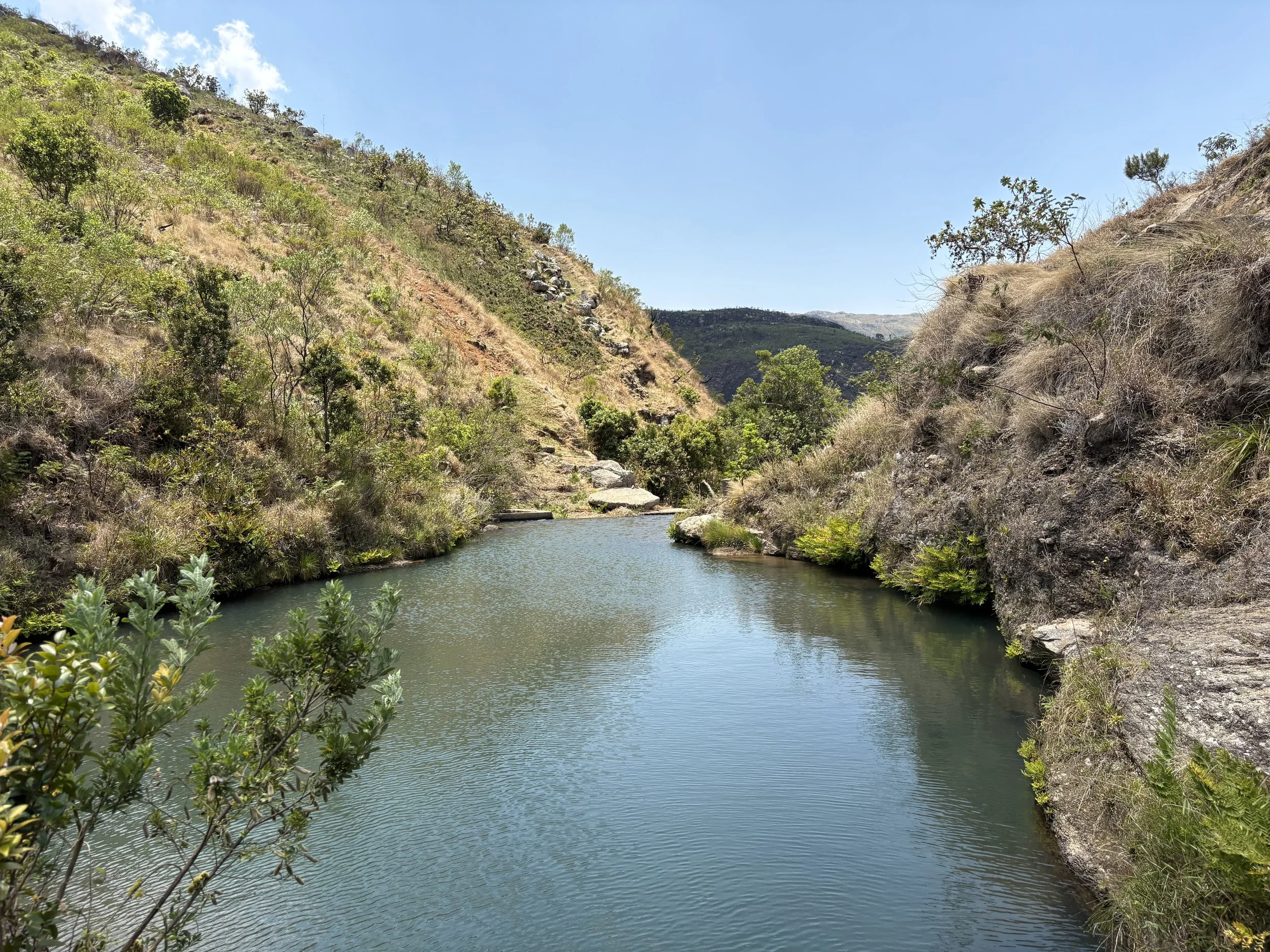Mount Mulanje
Why does everything hurt?
No, seriously, I’m pretty sure I can even feel my vestigial organs right now. That hike was one of the most physically challenging things I’ve ever done in my life—3,002 meters or 9,849 feet to the highest peak. I couldn’t do it in a single day, and I’m glad I didn’t, because even with two nights sleeping on the mountain while going up and coming down, taking a much-needed break after I still feel like all my muscles are just tensed waiting for the next round.
Leaving Likhubula Lodge where we stayed, a mountaineer’s lodge about 10 minutes from the base of the mountain trail, our guide, Kindness, showed up, and we started our hike. He said the first journey would take around 6 hours at a normal pace, but it became pretty clear pretty quickly that we would not be sticking to the “normal pace.” This wasn’t like any of the other trails I’d hiked before; this was literally a mountain, so it got steep in some areas. At some points, I was actually climbing hand over foot to pull myself up. I don’t know how many water breaks there were between starting and reaching the actual hut, but I’m pretty sure Kindness hadn’t accounted for so many in his time estimation. But with no training, I should have seen it coming.
As we climbed higher and higher, and the hut became “just” around the next peak, I began to wonder if maybe rolling down the mountain wouldn’t be so bad. I would definitely reach a point where I could rest sooner than I would fine one getting to the top. But I had to keep going. Mama didn’t raise no quitter. And by now my legs were starting to go numb. After a while the most challenging part is all mental because I can’t even see the destination, we want to reach. I just knew that it was “up ahead after this next steep” and after the fifth steep, you start to think that maybe it’s all a practical joke by the guide to see how far they can keep you walking. I started making some crazy promises to myself after a while, like “I’ll exclusively eat nsima from now on like my guide does if the hut is after this next bend” (hmm, maybe not) or “I won’t even think about a nice double cheeseburger with extra BBQ sauce and fries from Five Guys if my lungs stop trying to fall out and take a break” (okay, definitely not).” But then you see the hiker's hut off in the distance, and you’re like, okay, it’s real, and you get that last little bit of energy that you need, that final push to tough it out, so you can lie down, cook, and finish the day out.
Why does everything still hurt?
It’s the next day; we’re up early so we can reach the highest peak on the mountain, Sapitwa, home of the Mother Spirit of the mountain, according to traditional history. Translate that from Chichewa to English, and it means “Don’t Go There.” Which is ironic because you think I’d heed the warning. The path there is dangerous without a guide due to poor signage in some areas, and as we were walking, Kindness told us about a hiker who had vanished into thin air on the mountain. If you reach the top of the peak, you can see that they have placed a plaque dedicated to him. That’s not the only thing to see, though, once you reach the top. The view stretches for kilometers. You can see the green of the tea plantations, feel the wind as it blows, and nearly blows you off the mountain, and the villages that dot the landscape. Once I reached the peak, I was glad I didn’t listen to the warnings and braved the climb anyway. The view was worth it.
We take another rest day on the way down, since summitting Sapitwa is supposed to be the most challenging part of the hike, and the next day we start. Descending the mountain is a lot easier, but it works a totally different set of muscles from climbing up, and pretty soon my legs are burning again just as badly as the first time. However, going down the guide takes us on a different trail to a waterfall, and we take a break for a quick swim and to cool off from the heat. While we’re sitting around recovering in the cool and refreshing waters Kindness gives us a bit of history about how the Elders in the village used to walk up the trail to the waterfall and make an animal sacrifice praying for rain, money, or a good harvest and then summit the peak of Sapitwa that same day and before they even reached the top whatever they had asked for would already be granted, lately though the tradition has been declining.
We continue on our way down, getting passed by faster hikers and old ladies carrying massive bunches of firewood on their heads and finally arrive back at the Likubula Lodge, and at the perfect time too because I don’t know if I could have taken another step without my legs giving out under the weight of me and my backpack. All in all, it was challenging but definitely worth it—a good start to my adventures here in Malawi.












